The Top 20 and Beyond
The leading
COUNTRIES
In the anti-smoking arena, with their advanced and successful policies, collectively impact an impressive 962 million people worldwide.

This group, featuring nations as diverse as the UK, Sweden, Slovakia, Ireland, the Czech Republic, Switzerland, Lebanon, Greece, the USA, Spain, New Zealand, Romania, Italy, France, Canada, Germany, Saudi Arabia, Poland, Croatia, and Austria, showcases the vast reach and potential of effective tobacco control.
In the top 20 of the global anti-smoking index, European nations stand out prominently, with 15 out of the 20 spots occupied by countries from this region.
This includes the UK, Sweden, Slovakia, Ireland, the Czech Republic, Switzerland, Greece, Spain, Romania, Italy, France, Germany, Poland, and Austria. This European dominance highlights a regional trend towards innovative and effective anti-smoking strategies.






The top 20 index isn't just a European story. Countries like the USA, Lebanon, New Zealand, Canada, and Saudi Arabia mark the significant global strides made in this field.
These non-European nations bring unique perspectives and approaches to the table, demonstrating that effective anti-smoking strategies transcend regional boundaries and can be successfully implemented in varied cultural contexts.
The contrast becomes stark when considering the remaining 49 countries in the index, accounting for a combined population of approximately
4.6
BILLION
This staggering number reveals that a vast majority of the world's population lives in nations where anti-smoking policies are still far from optimal. The gap in policy effectiveness between these countries and the top 20 highlights the urgent need for global advancements in tobacco control, underscoring the significant potential for improving public health on a massive scale.

The most successful countries in tobacco control strike a balance, integrating alternative nicotine products alongside traditional measures. Conversely, those at the bottom of the rankings often adopt a more restrictive stance, focusing intensely on abstinence. This contrast highlights a key insight: effectiveness in tobacco control may lie in a multifaceted approach that combines innovation with conventional strategies, rather than in rigid, abstinence-only policies.
The varied country rankings in the anti-smoking index highlight a crucial aspect: there's substantial room for improvement in global anti-smoking policies.
The fact that no country appears in the top 10 for all types of alternative smoking products underscores the existing gaps in comprehensive and diversified innovation support. This suggests that while some nations excel in certain areas, a holistic approach to tobacco control, encompassing a wide range of products, is still an unachieved goal.

The World's Varied Response to Innovative Nicotine Products
The regulatory landscape for non-combustible nicotine alternatives varies significantly worldwide, particularly in the case of vaping. Despite growing evidence of its harm reduction potential, vaping faces some of the most stringent restrictions globally.

Remarkably, a total of seventeen countries have imposed complete bans on the sale of vaping products.

The global policy environment for heated tobacco products reflects uncertainty in how to regulate these novel non-combustible nicotine devices. While some progressive countries actively promote THPs in smoking control efforts, other nations take a much more restrictive stance.Thirteen countries impose outright bans on THPs sales, concentrated in parts of South America and Asia. Policies remain in flux across many markets as evidence on health impacts continues to emerge.
Of the four non-combustible nicotine products analyzed in this index, snus faces the most widespread prohibitions globally.
Within the European Union, snus is subject to a blanket ban, unable to be sold or marketed in any member states (Sweden being the exception). Beyond the EU, individual countries' approaches to snus regulation vary greatly depending on historical usage patterns and public health strategies.


As the newest non-combustible nicotine format, Nicotine Pouches have mostly avoided regulatory over scrutiny or access barriers thus far.
However, pouches could be relatively unknown outside European nations and the United States. While escaping bans, nicotine pouches lack affirmative public claims. But their early avoidance of regulatory resistance leaves potential for future growth if health merits gain recognition.
Multiple Pacesetters in Effective Anti-Smoking Policies




In the array of tobacco alternatives, distinct leaders emerge for each product, with no country claiming the top spot in more than one category. The UK is recognized as the leader in vaping. For Tobacco Heating Products (THPs), Pakistan takes the lead. Japan, uniquely, stands out as the foremost in the use of Snus. Meanwhile, Sweden leads in the niche of nicotine pouches.

In its battle against smoking, Japan has made a pronounced choice,favoring Tobacco Heating Products (THPs) over other innovative alternatives.Ranking third globally in this category, Japan's strategy showcases clear advantages and disadvantages. While this focus on THPs indicates a strategic alignment with specific tobacco alternatives, it also means neglecting the potential of other products.
In the realm of harm reduction,New Zealand distinguishes itself as the sole Asia-Pacific nation in the top 25 of the index.

While it prohibits products like snus and nicotine pouches, its full embrace of vaping sets a unique precedent in the region. This singular position underscores New Zealand's distinctive approach to tobacco control, marking it as the only Asia-Pacific country in the top tier for adopting progressive harm reduction strategies.
In the United States, where over 30 million adult smokers are exploring safer nicotine alternatives,the approach to tobacco control is marked by contradictions.
Although the U.S. ranks within the top 10 globally, indicating some progressive tendencies, its stance on specific products like vaping and heated tobacco is more cautious. America ranks only 18th in vaping accessibility and 19th in openness to heated tobacco products, hindered by the FDA's hesitance towards endorsing “unproven” products amidst ongoing legal challenges.
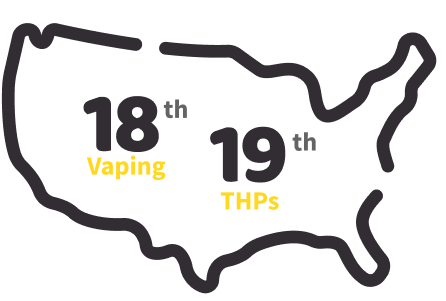
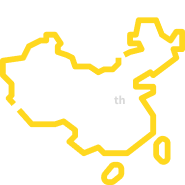
China confronts significant public health challenges in encouraging cigarette cessation through alternative nicotine channels. Yet,its regulatory stance on these alternatives is restrictive, ranking 51st globally.The country has imposed bans on Tobacco Heating Products (THPs) and nicotine pouches, and heavily restricts vaping and snus. This stringent approach may be influenced by state monopolies and the substantial revenue generated from tobacco taxation.
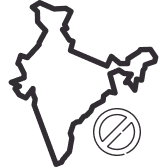
India stands at the very bottom of the global ranking, with a complete prohibition on all tobacco alternatives.This position starkly contrasts with its emerging economy status and professed commitment to public health. The total ban not only neglects the potential of harm reduction strategies but also inadvertently stimulates a rampant illicit trade to meet the persistent demand of smokers.
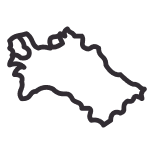
Turkmenistan ranks last in the Index, which is surprising given its celebrated status as a smoke-free country by the World Health Organization (WHO).
However, Turkmenistan's lack of transparency with public data and restrictions on civil liberties raise questions about the accuracy of reported numbers on the nation's true smoking situation. The WHO's smoke-free designation may not reflect realities in Turkmenistan if official statistics are unreliable due to authoritarian information controls and repression of critical voices.
While Turkmenistan ranks last globally for its prohibition and lack of transparency regarding smoking alternatives, Australia finds itself tied for the bottom position by enacting identical blanket bans.
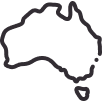
Despite Australia's reputation for progressive public health policies, it similarly scores zero across the board in vaping, heated tobacco, snus, and nicotine pouch availability. This highlights how even nations with advanced policy capacity can overlook nicotine innovation opportunities by following the model of repressive regimes.
From Scandinavia to MENA: Understanding Regional Policies



In Scandinavia, Sweden emerges as a notably open country, highly accepting various tobacco alternatives. Its scores are exceptionally high for vaping and nicotine pouches, alongside a traditionally strong preference for Snus. Denmark, on the other hand, presents a more varied landscape. While it shows a relatively open stance towards vaping and pouches, it adopts a restrictive approach towards Snus and tobacco heating products. Contrastingly, Norway demonstrates a markedly different approach. It maintains a highly restrictive environment for vaping, Tobacco Heating Products, and Nicotine Pouches. However, in alignment with its cultural ties with Sweden, Norway exhibits a favorable stance.
In the Americas, Canada and the United States are notably open to vaping and other smoking alternatives like Tobacco Heating Products, Snus, and Nicotine Pouches.
This contrasts sharply with Argentina, Brazil, Chile, Mexico, and Uruguay, where such products face bans.

The United States and Canada emerge as leaders in embracing these alternatives, while the rest of the region shows a more restrictive stance.
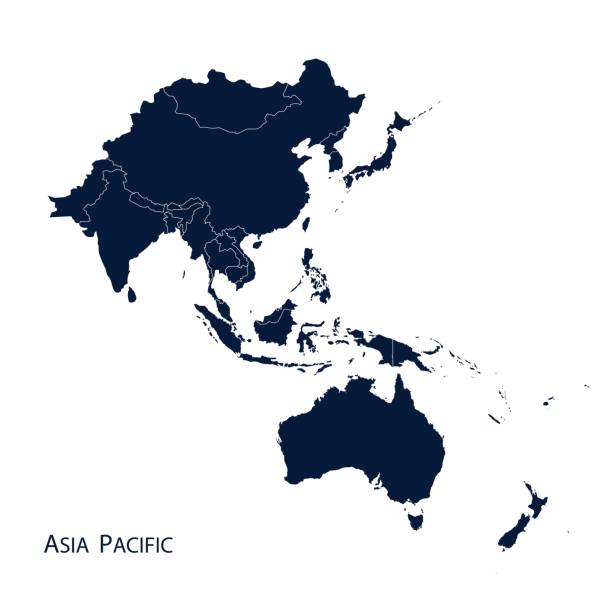
In the Asia Pacific, the stance on tobacco alternatives varies widely. New Zealand leads in vaping with a high score, indicating an open market, while China and Malaysia show moderate acceptance. However, Australia, India, Japan, Thailand, and Vietnam have banned vaping. Japan is the frontrunner for Tobacco Heating Products (THPs) and Nicotine Pouches, contrasting with the restrictive approaches of Australia, India, Thailand, and Vietnam. Similarly, most countries, including Australia, China, India, Japan, Malaysia, New Zealand, Thailand, and Vietnam, prohibited snus.
In the MENA region, national approaches to smoking alternatives vary widely, with Lebanon and Saudi Arabia emerging as leaders. Both countries rank highly for vaping and tobacco heating product availability.


Lebanon also promotes access to snus and nicotine pouches. While other MENA nations essentially prohibit these alternatives, Lebanon and Saudi Arabia take more progressive harm reduction stances across multiple product categories.Their relatively open regulatory frameworks make them regional pioneers.








